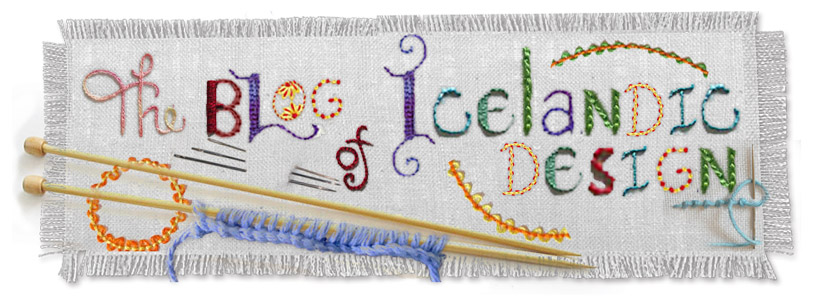 | |
| Icelandic Design's Greta Earflap Hat and Mittens |
The origins of embroidery are unknown, but early examples survive from ancient Egypt, Iron Age Northern Europe and Zhou Dynasty China. Examples of surviving Chinese chain stitch embroidery worked in silk thread have been dated to the 5th century BC.
Embroidery was a very important art in the Medieval Islam World, deemed (by the 17th century Turkish traveler Evliya Çelebi ) "craft of the two hands". Because embroidery was a sign of high social status in Muslim societies it became a hugely popular art. Many craftsmen embroidered with thread made from gold and silver.
Elaborately embroidered clothing, religious objects, and household items have been a mark of wealth and status in many cultures including ancient Persia, India, China, Japan, Byzantium, and medieval and Baroque Europe. Traditional folk techniques are passed from generation to generation in cultures as diverse as northern Vietnam, Mexico, and eastern Europe. Professional workshops and guilds arose in medieval England. The output of these workshops, called Opus Anglicanum or "English work," was famous throughout Europe.
Crewel Embroidery, or Crewelwork, is a decorative form of surface embroidery using wool and a variety of different embroidery stitches to follow a design outline applied to the fabric. The technique is at least a thousand years old. It was used in the Bayeux Tapestry, in Jacobean embroidery and in the Quaker tapestry.
 |
| An example of vintage wool Jacobean Crewelwork, and a few ways we used this type of hand embroidery for the 2012 line. |
Designs range from the traditional to more contemporary patterns. The traditional design styles are often referred to as Jacobean embroidery featuring highly stylized floral and animal designs with flowing vines and leaves.
Many different embroidery stitches are used in crewelwork to create a textured and colorful effect. Unlike silk or cotton embroidery threads, crewel wool is thicker and creates a raised, dimensional feel to the work. Some of the techniques and stitches include:
Outlining stitches such as stem stitch, chain stitch and split stitch
Satin stitches to create flat, filled areas within a design
Couched stitches, where one thread is laid on the surface of the fabric and another thread is used to tie it down. Couching is often used to create a trellis effect within an area of the design.
Seed stitches, applied randomly in an area to give a lightly shaded effect
French knots are commonly used in floral and fruit motifs for additional texture
Laid and Couched Work
Long and Short "soft shading"
 |
| Some embroidery stitch tutorials. The variety is endless. |
Embroidery can be classified according to whether the design is stitched on top of or through the foundation fabric, and by the relationship of stitch placement to the fabric.
In free embroidery, designs are applied without regard to the weave of the underlying fabric. Examples include crewel and traditional Chinese and Japanese embroidery.
Cross-stitch is a type of counted-thread embroidery. Tea-cloth, Hungary, mid-20th century
Counted-thread embroidery patterns are created by making stitches over a predetermined number of threads in the foundation fabric.
 |
| An ancient example of cross-stitch, and an example of its use for Fall 2012. |
In canvas work threads are stitched through a fabric mesh to create a dense pattern that completely covers the foundation fabric. Traditional canvas work such as bargello is a counted-thread technique. Since the 19th century, printed and hand painted canvases where the painted or printed image serves as color-guide have eliminated the need for counting threads. These are particularly suited to pictorial rather than geometric designs deriving from the Berlin wool work craze of the early 19th century.
In drawn thread work and cutwork, the foundation fabric is deformed or cut away to create holes that are then embellished with embroidery, often with thread in the same color as the foundation fabric. These techniques are the progenitors of needlelace. When created in white thread on white linen or cotton, this work is collectively referred to as whitework.
The most striking fact in the development of embroidery over the centuries, is that there are no changes of materials or techniques which can be felt or interpreted as "advances" from a primitive to a later, more refined stage. In fact, we often find in early works a technical accomplishment and high standard of craftsmanship rarely attained in these modern times. This fact illustrates the danger of hand embroidery becoming a lost art, and the handicraft world would do well to do its best to preserve it (as we, here at Icelandic, continue to do every season).






